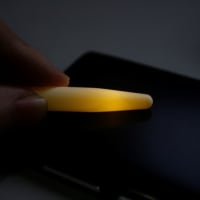Zirconium dioxide (ZrO2) has a cubic crystalline form which is known as cubic zirconia. In many cases, it is found colorless but usually, it has many varieties of colors. It is a hard synthesized material and optically flawless. Zirconia word is famous in jewelry and it is interesting to know that because of its diamond-like appearance, it has remained a strong competitor of diamond in the market. The other reasons why it is used in jewelry is that it is low in cost and durable.
History of Cubic Zirconia:
From the analysis of cubic zirconium coil and by further thermal reactions on it, stabilized zirconia was formed in 1929. Detailed research on zirconia was done in 1937 and it was confirmed by using X-ray technology. According to some theories, on the initial discovery, zirconia was used as a ceramic material in some industries because of its high resistance to heat and electricity.

Technical Aspects:
The both, physical and optical, properties of synthesized cubic zirconia are variable as there could be a difference in the method of production among many manufacturers. It is crystallographically isomeric, which, as an important element, could be used instead of a diamond.
If the hardness of zirconia is measured on the Mohs scale, it is 8-8.5. According to research, it is slightly harder than many natural-gems. Its refractive index is 2.18 which is closer to diamond's refractive index.
Zirconia's value of dispersion is 0.0588-0.066 which is quite higher than that of the diamond. Its structure shows that it has no cleavage and does exhibit a conchoidal structure.
Zirconia shows different color behaviors under UV rays with long or short wavelengths. It was researched that only colored based cubic zirconia is able to show a very complex pattern of colors.
Conclusion:
The above-discussed information is basic which you should know about cubic zirconia and its technical aspects. Understanding and knowledge of this topic can help you differentiate between diamond and zirconium. This is important because there have been many cases of fraud where the jeweler sold zirconia instead of a diamond. It is obvious that you may not be able to identify the difference in the physical appearance of both substances.
However, a closer inspection and some simple experiments can help you to avoid any possible misunderstanding. These experiments can be some tests to judge the color patterns or refractive index of zirconia and diamond under different conditions.
For more information, please visit http://www.samaterials.com/
History of Cubic Zirconia:
From the analysis of cubic zirconium coil and by further thermal reactions on it, stabilized zirconia was formed in 1929. Detailed research on zirconia was done in 1937 and it was confirmed by using X-ray technology. According to some theories, on the initial discovery, zirconia was used as a ceramic material in some industries because of its high resistance to heat and electricity.

Technical Aspects:
The both, physical and optical, properties of synthesized cubic zirconia are variable as there could be a difference in the method of production among many manufacturers. It is crystallographically isomeric, which, as an important element, could be used instead of a diamond.
If the hardness of zirconia is measured on the Mohs scale, it is 8-8.5. According to research, it is slightly harder than many natural-gems. Its refractive index is 2.18 which is closer to diamond's refractive index.
Zirconia's value of dispersion is 0.0588-0.066 which is quite higher than that of the diamond. Its structure shows that it has no cleavage and does exhibit a conchoidal structure.
Zirconia shows different color behaviors under UV rays with long or short wavelengths. It was researched that only colored based cubic zirconia is able to show a very complex pattern of colors.
Conclusion:
The above-discussed information is basic which you should know about cubic zirconia and its technical aspects. Understanding and knowledge of this topic can help you differentiate between diamond and zirconium. This is important because there have been many cases of fraud where the jeweler sold zirconia instead of a diamond. It is obvious that you may not be able to identify the difference in the physical appearance of both substances.
However, a closer inspection and some simple experiments can help you to avoid any possible misunderstanding. These experiments can be some tests to judge the color patterns or refractive index of zirconia and diamond under different conditions.
For more information, please visit http://www.samaterials.com/




















※コメント投稿者のブログIDはブログ作成者のみに通知されます